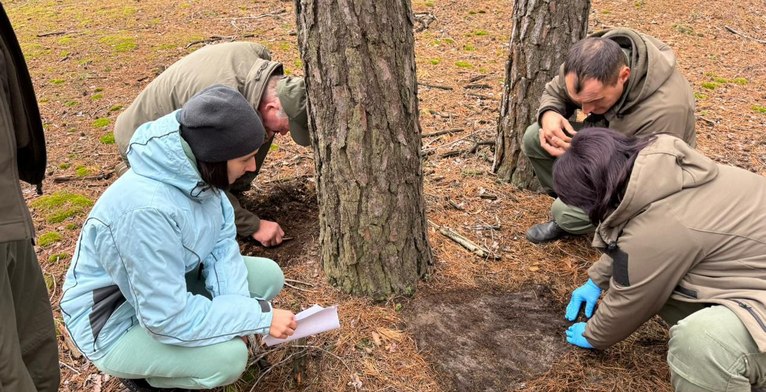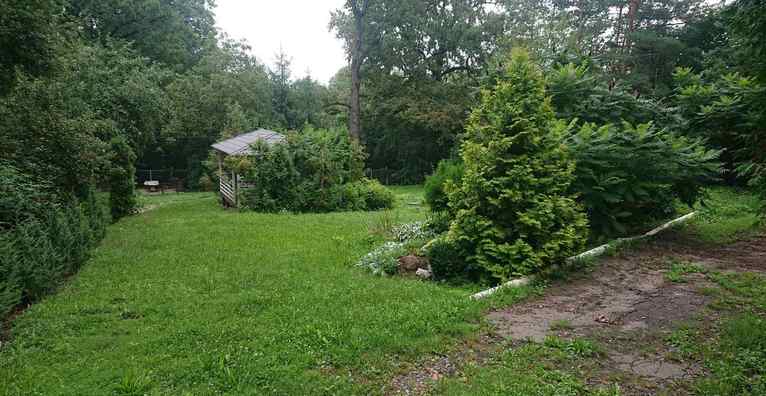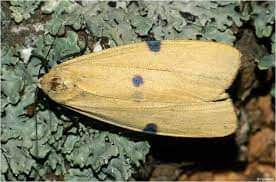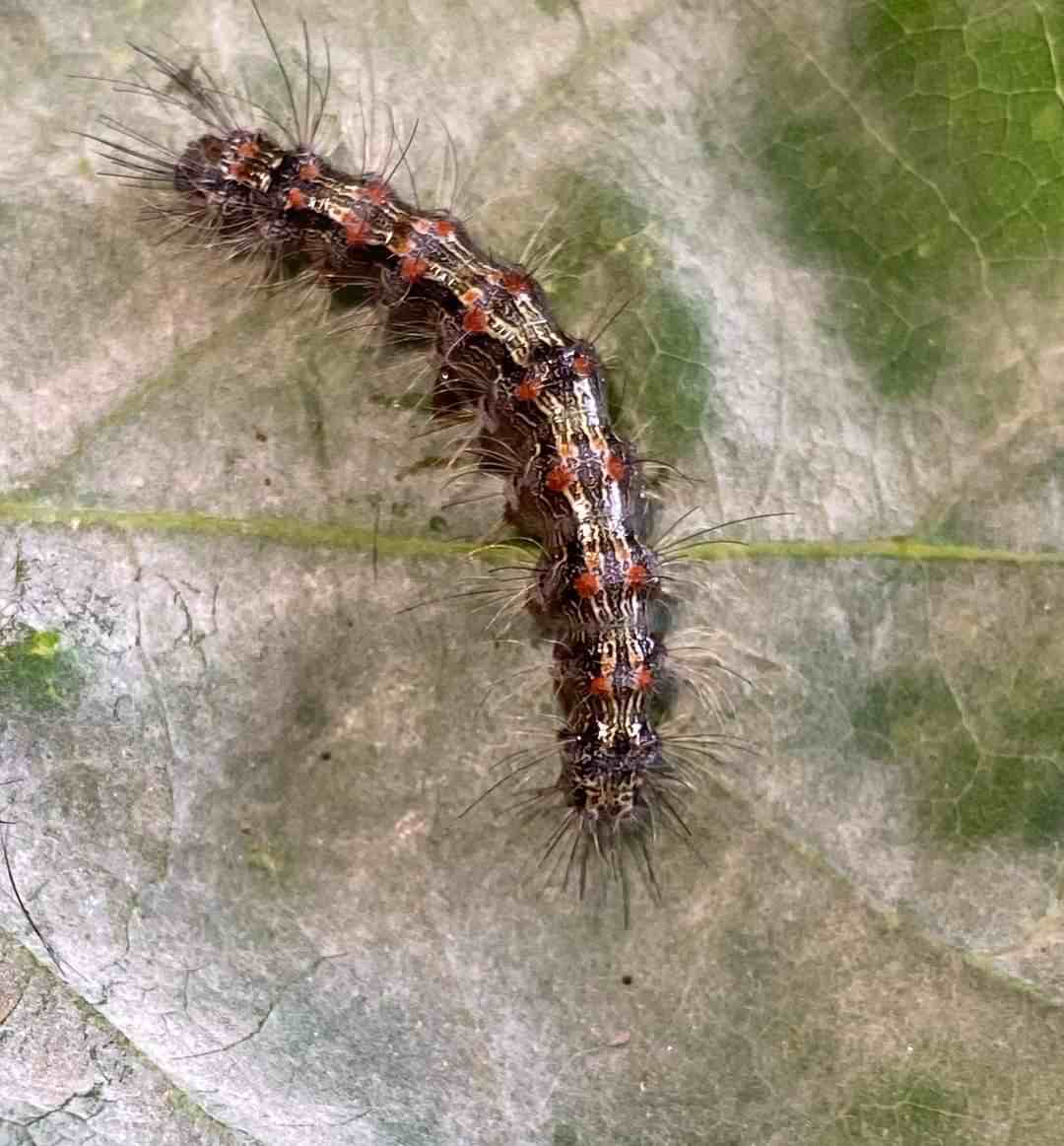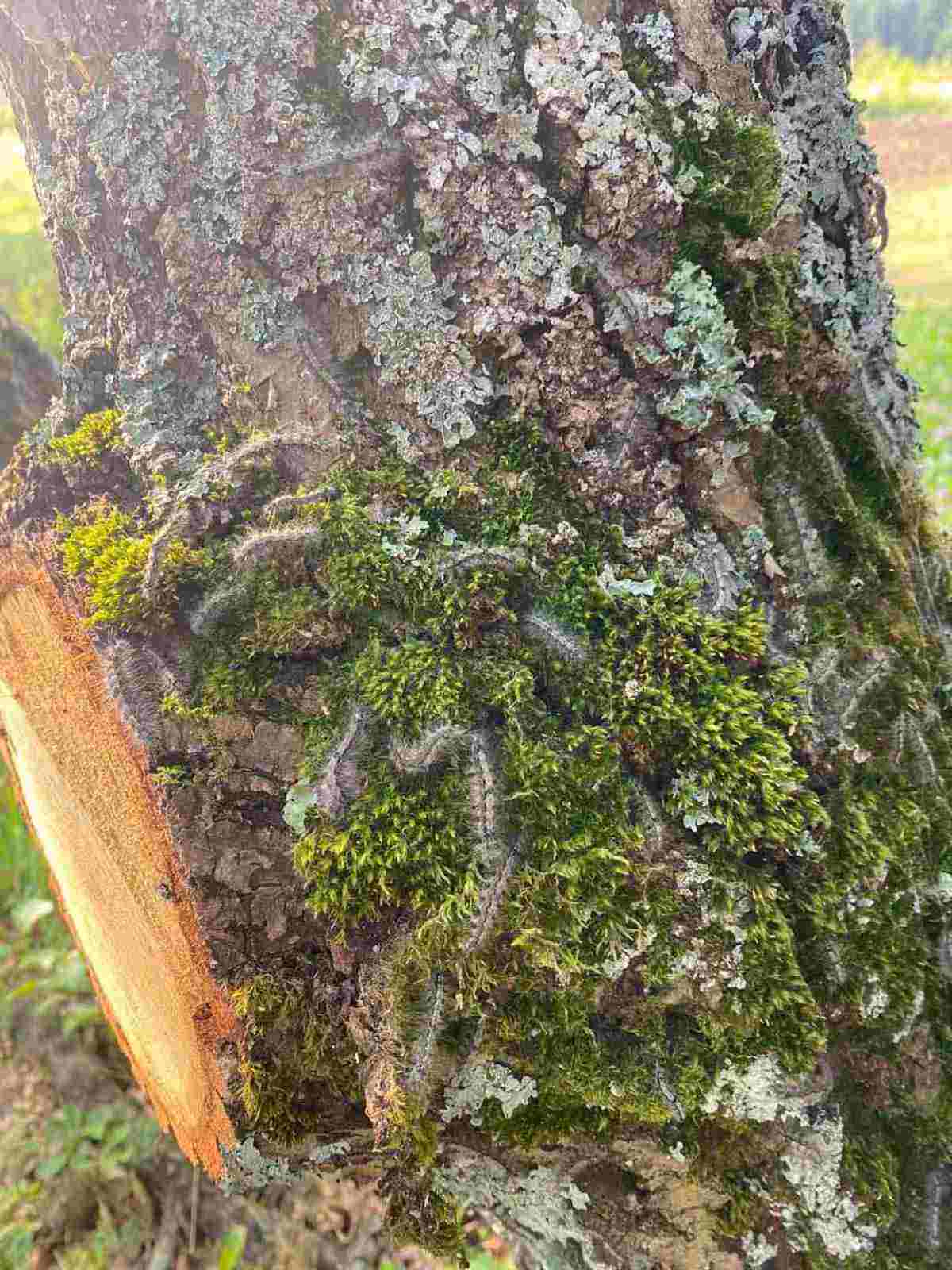Specialists of the State Specialized Forest Protection Enterprise "Kharkivlisozakhyst" have detected an outbreak of mass reproduction of Lithosia quadra in deciduous stands of Kharkiv region. This species of lichen moth is distributed throughout Europe and Northern Asia east to Japan. It occurs in deciduous forests and fruit plantations, less often in open areas.
Lithosia quadra is a representative of the tribe of moths of the subfamily Arctiidae (Erebidae). The wingspan is 35-55 mm. Males are smaller than females. In adults, there is a clear sexual dimorphism. Males have gray wings with yellow veins and a blue-black stripe on the front part of the outer edge of the forewing. Females have yellow wings with two blue-black dots.
The caterpillar is gray-brown, with thin longitudinal lines, on the back in front, in the center and behind there is one transverse black spot, and under the back there are longitudinal rows of small reddish-yellow warts. The butterfly flies from June to September depending on the location. In the southern part of the range, there is occasionally a second generation.




